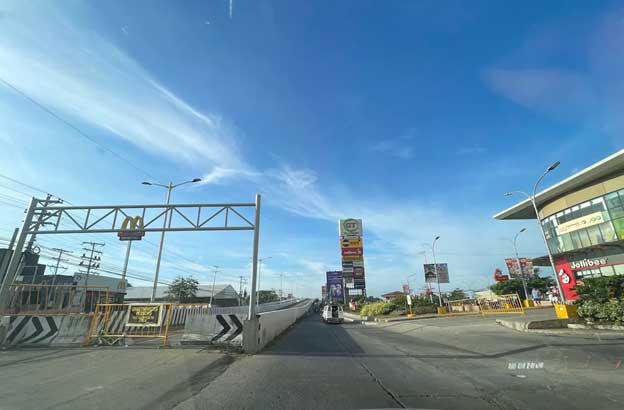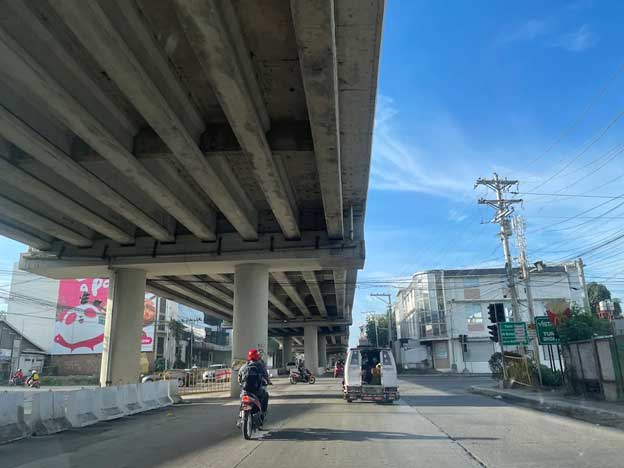
By Francis Allan Angelo and Cong Corrales
(This story was republished with permission from Rappler)
Part 1: While social media presents opportunities for growth in community journalism both as a business and public service, it could also be a landmine or rabbit hole that exposes journalists to health and safety risks
“The media is a food chain which would fall apart without local newspapers.” – John Oliver
Social media is a double-edged sword that could spell success or failure, or force a community news organization to make a turn for the worse.
News houses in Iloilo and Cagayan de Oro agree that social media, especially Facebook, helped their respective operations, particularly in distribution and widening their audience.
According to the 2022 Digital News Report (DNR) of Reuters Institute, online news consumption in the Philippines has been growing on various social media platforms.
In a country report written by veteran journalist and UP professor Yvonne Chua, television is still the most popular medium in the Philippines, but the latest report showed a “steady growth of online news consumption including heavy news use on a range of social platforms.”
“Facebook remains the most widely used (73% for news weekly) but the biggest leap comes from TikTok, used by mere 2% for news in 2020 and now by 15%. News organisations correspondingly moved into the platform, especially in time for the elections. Besides being the largest radio and television network, GMA Network is now the country’s largest news creator on TikTok, which it also partnered with for an election campaign series. Other brands that have attracted a loyal following are ABS-CBN, News5, The Philippine Star, Manila Bulletin, DZRH, and Rappler,” the report said.
May Ortega, news director of Aksyon Radyo-Iloilo of the Manila Broadcasting Corporation, observed the exponential growth of their Facebook audience from around 20,000 in 2009 to the current 1.1 million followers and 904,000 likes – in a span of 14 years.

Quick adjustments
Ortega said a nephew in Canada suggested that their station should have its own Facebook account for added avenue to more listeners, especially Ilonggos abroad. They converted the Facebook account into a page in 2013 to acquire a bigger audience.
“The transition to social media is very palpable. We have no other choice but to embrace this shift,” Ortega said.
Embracing means turning broadcast journalism, at least in Iloilo, on its head. Ortega said their function is now a combination of print and TV.
“Before, all we had to do was talk, now we have to learn how to write in Hiligaynon, dabble in graphics, and master the operation of all types of cameras because of the demands of multimedia operations. It’s a steep learning curve for most of us,” she added.
Daily Guardian publisher Lawrence Clark Fernandez said it was imperative for the paper to improve its website and Facebook account to keep up with audience preference. From a mere 15,000 followers in 2021, the paper’s Facebook page now has more than 328,000 followers and 247,000 likes.
From 2021 and 2023, social media accounts accounted for 30%-45% of Daily Guardian’s reader traffic on its official website.
Sean Rafio, social media and online reporter for Daily Guardian, observed that while social media is partly responsible for growing traffic to the official website, news stories posted on the Facebook page get lower traction compared to posts about entertainment personalities and celebrities, pet stories, and funny experiences of netizens.
“Apart from website materials, Daily Guardian also realized the importance of content creation on just about anything that is of interest to the readers. Videos always get the most traction among our native content, while human interest and entertainment stories get a chunk of reactions and shares,” Fernandez added.
Facebook audience preferences
Posts on calamities and stories on corruption also take the fancy of Facebook audiences. One example is the controversial P680-million Ungka flyover which remains unused because of its sinking foundations. Apart from its structural woes, the flyover was also the subject of online ridicule via memes due to flooding after just a few hours of rain.

Seeing the potential for engagement and a way to keep the issue relevant to their audience, Aksyon Radyo-Iloilo initiated a search for the best flyover flooding meme. The contest may have poked fun at the flyover and gained more followers on their part, but Ortega said, it was also one way of keeping the issue alive in the minds of their audience given the gravity of the controversy.
“It was a way of hitting two birds with one stone for us. It was meant to engage the audience not just for the metrics, but also to provide another lens of looking at the issue,” she added.
The flyover flooding meme contest ran from May 2 to May 14, 2023, and expanded Aksyon Radyo’s Facebook page reach to more than 2.07 million.

Glenda Tayona, editor of Iloilo-based Panay News, said it is important for news organizations to strategize on content creation and engagement.
“We observed that videos tend to get more traction on Facebook, that is why we always hold Facebook live coverages of major news events. Breaking news and human-interest stories are also effective in acquiring audience engagement,” Tayona said.
One of the more recent videos that gained significant traction for Panay News is the one that shows a violent altercation in a barangay benefit dance in the town of Tigbauan, Iloilo on March 19. It gained more than 1 million views, 9,200 reactions, and 1,100 comments.
The live coverage of the protest rally at the sinking Ungka flyover in Pavia town on May 23 also garnered more than 4,100 views.
Daily Guardian’s top video post was that of former Ilongga beauty queen Rabiya Mateo answering the preliminary interview for the Miss Universe-Philippines pageant in 2020. It garnered 3.2 million views, 141,000 reactions, and 2,000 comments.
Added income?
Despite the attacks and challenges, news organizations in Iloilo remain focused on taking advantage of potential benefits from social media.
With its growing online audience, Aksyon Radyo-Iloilo has now begun monetizing its online content, particularly videos, since December 2022.
Based on their monitoring, its Facebook page earned an average of US$150 to $200 per month from December 2022 to March 2023, which then increased to $300 in April 2023.
Ortega said they noticed ad postings on their Facebook video materials which generated income for the station. While the earning is not that significant compared to their traditional advertising revenues, Ortega said the prospects look bright for the station.
“Videos are now generating income from our social media account, but it’s just a small fraction of our overall revenue stream. We still rely on the usual advertising materials. But the growing audience is a good add-on to our marketing strategies to keep us afloat,” she added.
Contrary to the notion that technology will somehow whittle down newsroom manpower, Ortega said their current operations require more digital natives, folks who have the skills to produce materials and navigate the current information environment.
“We need people who are skilled in graphics and those who know how to write for a specific kind of audience. There are certain materials that are optimized for a certain platform. For example, Instagram is more image-based, while TikTok is a venue for short videos. All these we must learn from scratch for most of us,” Ortega said.
Annaliza Amontos-Reyes, program director of dxCC-RMN Cagayan de Oro said that although they have also joined the social media bandwagon, they have yet to monetize their social media accounts.
“Our presence on social media platforms are mainly just for exposure to our clients (ads) and wider reach of audience,” she said. They still do not have staff who will focus on their social media platforms, but they are currently hiring.
Another major challenge is how to balance the desire to get more online traction with the primary work of journalists – to inform and educate the audience.
“We are still journalists at the end of the day and that is our main purpose and reason for being. We must not lose sight of that reality. Along that line, we also have to strictly comply with the community standards of these online platforms or we risk losing our page and audience,” Ortega said.
Knowing, reaching audiences
Apart from hiring a content creator-cum-manager, Daily Guardian also partnered with IT and marketing firm PROMETHEUS, which was founded by Lcid Crescent Fernandez, brother of the paper’s publisher Lawrence Clark Fernandez.
PROMETHEUS has been helping in the technical aspects of content creation and community engagement such as documentary production, podcasts, and videos. Their current project is a documentary on the Ungka flyover which has become a viral issue for Ilonggo netizens.
Daryl Lasafin, head of operations of Iloilo-based IT firm Dame Digital and former news editor of Panay News, said community engagement and exploitation of platforms other than Facebook and Twitter are essential for community news organizations to cope and survive.
Lasafin said there are other ways to grow the audience with different demands and inclinations.
“Instagram audiences have their own demands from content creators. TikTok is also a different animal altogether. Apart from social media, news companies can also try email newsletters that curate audience-specific materials,” he added.
Lasafin said it is vital for community news organizations to know their audience and their preferences to optimize content creation and engagement. He also cautioned that while online platforms are effective ways of distributing the news, these are also competitors of news organizations.
“Facebook is also our competitor. News organizations use the platform for free and Facebook is most likely to push content where it earns. That’s one reality that news organizations must be aware of,” he added.
While social media presents opportunities for growth in community journalism both as a business and public service, it could also be a landmine or rabbit hole that exposes journalists to health and safety risks.
This was more evident between 2016 and 2022, the years of the confrontational Duterte administration compounded by the pandemic and the divisive 2022 presidential elections. (To be concluded)
NEXT: Part 2 | Social media breeds, spreads contempt of community journalists
Francis Allan Angelo and Cong Corrales are Aries Rufo Journalism fellows.
















